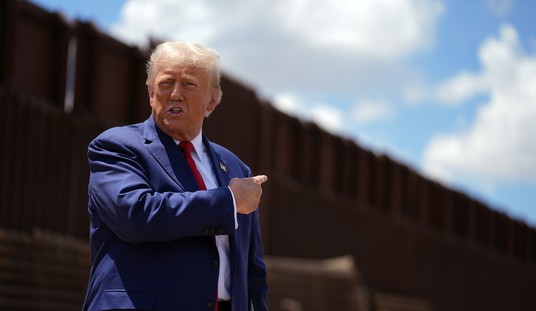Last night, John looked at the new asylum agreement we just signed with El Salvador and what implications this might hold for the future of both our legal and illegal immigration challenges facing us on our southern border. More details came out later and there’s a bit of backstory behind this agreement that deserves a look. For one thing, this is a preliminary deal with very little meat on it yet. It sounds as if this would more accurately be called an agreement in principle rather than any sort of formal treaty. (Associated Press)
The United States on Friday signed an agreement that paves the way for the U.S. to send many asylum-seekers to one of the world’s most violent countries, El Salvador.
But both countries must first take necessary legal actions and implement major border security and asylum procedures before it would go into effect, according to a draft copy of the agreement obtained by The Associated Press.
The deal is the latest ambitious step taken by the Trump administration to lean on other nations — many of them notoriously violent — to take in immigrants to stop the flow of migrants to the U.S.-Mexico border.
One of the first things to keep in mind that this isn’t technically a safe third country agreement, though when it’s fleshed out it will likely act as essentially the same thing. That’s similar to the Remain in Mexico policy that the Trump administration worked out with our neighbors to the south. It’s not identical to our agreement with Canada, but it winds up producing most of the same results.
Also, as John already noted, describing El Salvador as “safe” in any context is something of a joke. Even their own new president recently admitted (or at least suggested) that the gangs in that country probably control more turf than the actual government and far too many law enforcement officials are corrupt. But at least in the broad strokes, the White House seems to be indicating that we will make funds and resources available to help make the country at least a bit safer. They’ve recently managed to get the violent crime rate down a bit, so perhaps these improvements can continue with some help from us.
We should also note that El Salvador isn’t really a big part of the migrant issue. If you look at a map of the country you will note that they only take up a small part of the southern border of Guatemala and the route north from there goes through some rough terrain without much in the way of roads. Far more migrants probably come from El Salvadore than actually pass through there. But if we want a comprehensive solution to our border issues, all of the nations involved will have to be included eventually.
This agreement comes barely a month after Speaker Nancy Pelosi led a delegation down to El Salvador to meet with their new president, some legislators and refugee aid groups. You can read a summary of her trip at the Speaker’s website, but she came away sounding somewhat positive about the experience. She’s not a fan of what Trump is proposing here (there’s a shock for you), but some of her other comments make it sound as if she’s open to some sort of solution. Interestingly, when she’s not criticizing the President, she sounds like she’s on the same page in some regards. Here’s Pelosi saying basically that she wants people in El Salvador to stay there if they can be made safe.
During visit to El Salvador, House Speaker Nancy Pelosi spoke of the need to find ways to reduce the number of people leaving that country: "We want them to live and stay in their own country, contributing to the greatness of El Salvador." https://t.co/Jaizp21Voc pic.twitter.com/V9fZDGjF16
— ABC News (@ABC) August 10, 2019
Oddly enough, that sounds pretty much like the same thing President Trump wants. Do you suppose we might actually see these two agreeing on a question regarding immigration? LOL. Don’t hold your breath.








Join the conversation as a VIP Member